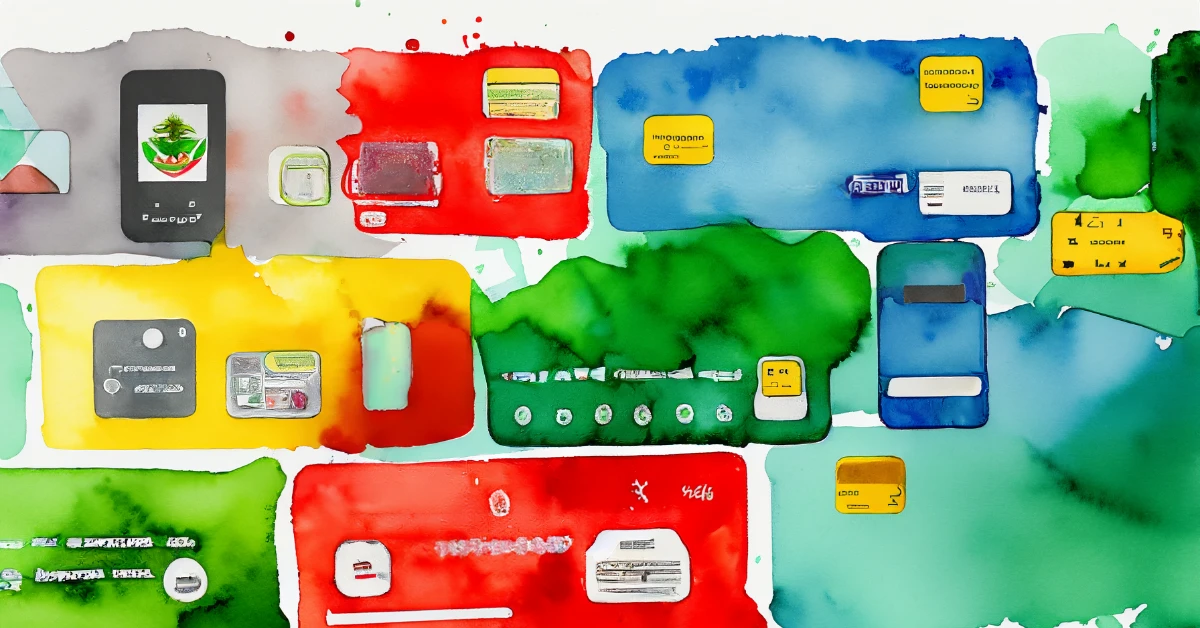Mexico's Most Preferred Alternative Payment Methods
We're often asked what payment and payout methods are most preferred in a particular market. As we're focusing on Mexico this week, this is a perfect...

The world of ecommerce is experiencing a paradigm shift. Alternative payment methods (APMs) are squarely in the spotlight, both for payments and payouts. Traditional credit cards and debit cards are no longer the primary choice of buyers or payees. A range of innovative payment solutions are vying for consumer attention and are fast becoming the preferred choices for many. In this blog post, we explore the most frequently used APMs in the U.S., the evolving trends in alternative payments, and how embracing these methods can boost your conversion rates and revenue.
These are the most frequently used APMs in 2023:
1. Digital Wallets: The popularity of mobile wallets has soared. Today, it is estimated there are over 3.5B users worldwide, with 5.2B expected by 2026. This growth is a direct reflection of their growing acceptance and convenience.
2. Prepaid Cards: Prepaid cards have gained traction as a versatile and viable payment solution, especially for overseas transactions and in places where traditional banking is not easily accessible.
3. Buy Now, Pay Later (BNPL): With an anticipated global market volume of over $90B by 2029, BNPL solutions are increasingly reshaping the ecommerce landscape.
4. Real-Time Payments (RTP): Fueled by local government initiatives, including FedNow, RTP is gaining momentum. RTP's instant settlement of funds and round-the-clock accessibility make it a unique and efficient payment method.
5. Open Banking: Offering a fast, affordable, and secure method to transact, open banking has emerged as a favored choice, promising a better customer experience. While Open Banking isn't as widely adopted as the other APMs noted in this section, it is rapidly gaining traction and should be a significant component of APM decisions in the next 24-36 months.
The alternative payment methods ecosystem is exactly that - an ecosystem. There are widely varying projections as to the size of this market. The number of sectors included in estimates isn't consistent and, therefore, we have varying estimates as to just how big the opportunity is and will be.
What is consistent?
There is a multi-trillion dollar network economy on the horizon for APMs with billions of dollars in revenue to be generated.
With the rapid growth of APMs, what are the predominant use cases? Also, why do APMs matter?
Following are common use cases that highlight how the acceptance of APMs can increase conversion rates and revenue:
1. Reducing Cart Abandonment: A lack of payment options is one of the main reasons buyers abandon their shopping carts. By offering a variety of APMs, ecommerce companies can appeal to a broader demographic and tap into new demographic and geographic markets. Meeting the needs of buyers where they are reduces cart abandonment and increases conversion rates.
2. Encouraging Purchases with BNPL: BNPL providers like Klarna and Affirm allow customers to spread out their payments over time with no interest or hidden fees. This option increases conversions, fostering a long-lasting relationship with the customer and boosting sales. According to Klarna, BNPL increases conversions by 44%.
3. Enhancing User Experience with Digital Wallets: Digital wallets like Google Pay, Apple Pay, and Amazon Pay provide customers with a seamless payment experience, leading to increased conversion rates and sales. Why? They cater to a growing number of customers who prefer paying with their phones and value a consistent and convenient checkout method.
4. Catering to Local Preferences: Recognizing local payment preferences can drastically increase conversion rates. For instance, in Germany, Girocard's contactless payments are popular, while in the Netherlands, iDeal is preferred. Similarly, in Asian countries, offering AliPay or WeChat Pay is essential to serve the customer base effectively.
5. Personalization and Optimization: It's crucial to analyze and track the performance of each payment method. Each one should be tested and experimented on to determine which is most cost-effective, secure, and can be best personalized to the customer based upon their geography, language, purchase preferences and currency preferences.
As the ecommerce space continues to evolve, so too should your payment strategies. By understanding your customers' payment and payout preferences, and offering a variety of APMs, you can enhance their shopping experience, reduce cart abandonment, increase conversion rates, and ultimately, drive revenue growth. For your payees, you will also be in the best position to attract and retain top talent by recognizing the importance of their payment preferences.
Remember, the key is not to offer every payment and payout methods available to everyone. Rather, the key is to present the ones that your customers and payees prefer and find most convenient.
To learn more, read our Complete Guide to Alternative Payments & Payouts.
If you're wondering how you get started addressing these opportunities, let's talk.

We're often asked what payment and payout methods are most preferred in a particular market. As we're focusing on Mexico this week, this is a perfect...

Colombia is rapidly becoming a regional leader when it comes to technology and digitalization. With this growing access to technology and an...

2023 is moving, quickly. We're beginning conversations with our customers and partners about 2024 plans and strategies, the payments landscape in the...